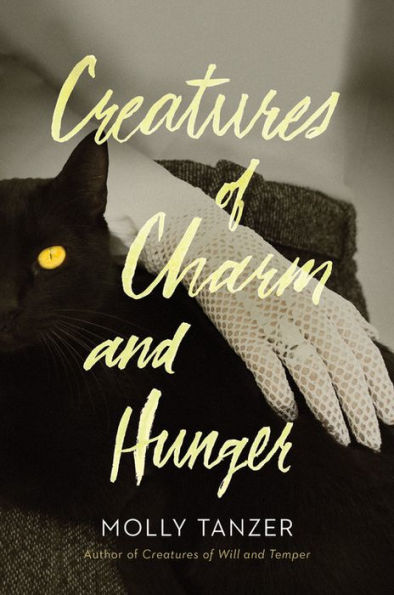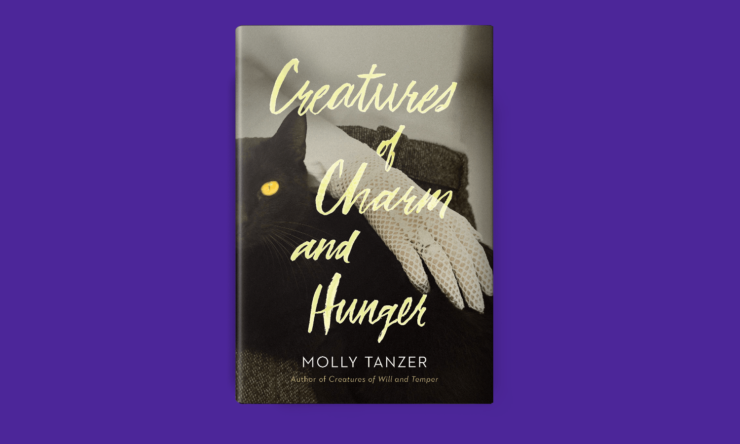Creatures of Charm and Hunger is the third and final, novel in Molly Tanzer’s Diabolist’s Library trilogy. It came, I will confess, as something of a surprise to me as I read the acknowledgements at the end of the book, that the Diabolist books are not merely loosely-connected standalone novels sharing a universe, but a trilogy; and that Creatures of Charm and Hunger is a capstone conclusion rather itself the beginning of a longer story—out of the trio of Creatures of Will and Temper (set in Victorian England, and something of an adventure romp with really creepy underpinnings), Creatures of Want and Ruin (set in rural American Prohibition, and featuring a just-averted diabolic apocalypse), Creatures of Charm and Hunger is slowest in pace and least cohesive in its thematic arguments; and least, too, a novel with an ending rather than a stopping-place.
I wanted to like it a lot more than it turns out I actually did.
Creatures of Charm and Hunger takes place towards the end of the Second World War, largely in a house outside a small English village, partly in Germany. Its main protagonists are two adolescent girls who are preparing to undergo the tests for entry to an organised society of diabolists. One, Jane, is the daughter of the Society’s Librarian—Nancy—and has a fraught relationship with her mother. Jane wants to be grown up and sophisticated, to move away to a city and to travel the (post-war) world, and more than that, she wants to feel that she has her mother’s love and respect the way that her best friend, Miriam, seems to have Nancy’s love and respect.
Miriam is the child of German diabolists—a mostly-secular Jew who married a Christian—and has been living with Nancy and Jane for several years at this point, after her parents sent her away for safety, while they stayed behind to work against the Nazis. Her feelings about her heritage are complicated, though she feels like she stands out as Other in the English countryside. She’s a more thorough scholar than Jane, and in some ways more driven.
Buy the Book


Creatures of Charm and Hunger
When Miriam passes her initial test and Jane ostensibly passes hers (but really feels she has failed), Jane sets out to create proof that she couldn’t possibly be unsuited to being a diabolist, but gets in well over her head when she summons a demon into her pet cat, Smudge. This demonic familiar is helpful to Jane, but dangerous: so dangerous that this is forbidden by the society which Jane aspires to join.
Meanwhile, Miriam is less concerned about the society and more concerned with the fate of her parents. Edith, Nancy’s sister, reveals to her that they have not been in communication in some time, and that some members of the society feel that Miriam’s parents may have betrayed them to the Nazis. German diabolists are working on some kind of weapon, and Edith intends to see what can be found about Miriam’s parents while on a mission behind enemy lines in Germany. But Miriam doesn’t mean to sit back and let anyone else do the work: through diabolism, she means to investigate and prove her parents’ innocence—or at least find out what’s happened to them. But the kind of diabolism that lets one separate one’s consciousness from one’s body and go hopping across continents doesn’t come without a high cost. Both Miriam and Jane are in over their heads, and matters only get worse when it becomes clear that something’s wrong with Nancy.
I’ll confess to you: I didn’t enjoy Creatures of Charm and Hunger very much. The emotional centre of the novel is the sister-like relationship between Miriam and Jane: a relationship that grows steadily more strained and awkward as the book progresses, with a partial reconciliation before a more definitive break. Creatures of Charm and Hunger dwells in the uncomfortableness of strained family relationships, mistrust and miscommunication, betrayal and the ache of broken things past mending. It is not an uplifting book, and the ending resolves none of the emotional threads: not even a little. Tanzer is deft with language and with character: Jane, Miriam, Nancy and Edith feel like real individuals, with good points and bad points and pettiness and sharp edges. But it’s not a comfortable novel to read, and even now, I’m not sure if it’s effective—if that was its aim—or if it aimed at something else, and missed the mark.
I didn’t enjoy it very much, but I’m not sure how much that lack of enjoyment is down to the book, and how much to the circumstances under which I read it: it’s got quite a claustrophobic wee sense of building awkwardness and unease, and this is quite a claustrophobic time. In the end, I offer a shrug.
I’m still not entirely sure what I think of it.
Creatures of Charm and Hunger is available from Mariner Books.
Liz Bourke is a cranky queer person who reads books. She holds a Ph.D in Classics from Trinity College, Dublin. Her first book, Sleeping With Monsters, a collection of reviews and criticism, was published in 2017 by Aqueduct Press. It was a finalist for the 2018 Locus Awards and was nominated for a 2018 Hugo Award in Best Related Work. Find her at her blog, or find her at her Twitter. She supports the work of the Irish Refugee Council, the Transgender Equality Network Ireland, and the Abortion Rights Campaign.










